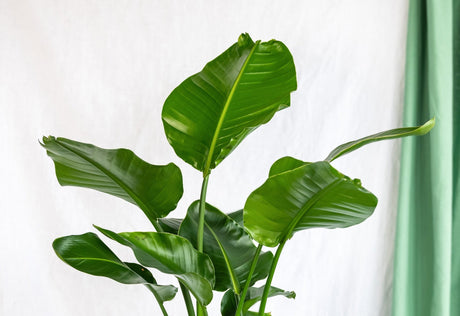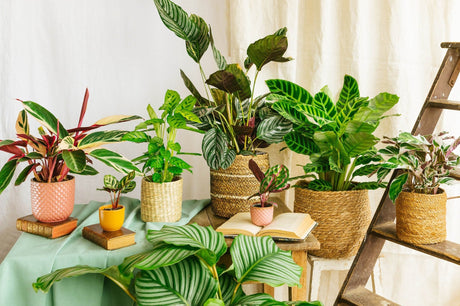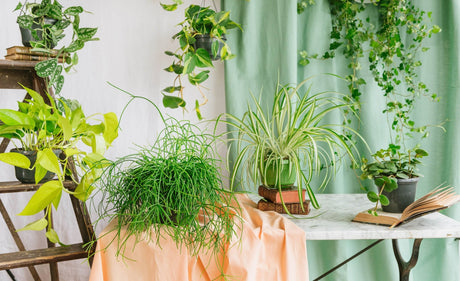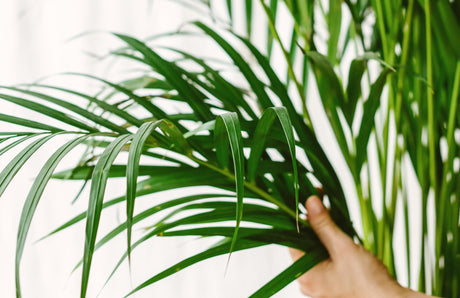Polyscias is an exotic houseplant that has become very popular in recent years due to its leaves elegant and its ease of maintenance.
Native of tropical regions Asia and the Pacific, this plant is also known as the name of aralia or "rubber plant".
Dive into the captivating world of Polyscias, a versatile houseplant that comes in three distinct varieties, each offering a unique plant experience. Discover the Mini Polyscias, the Polyscias Roble and the Polyscias Fabian, and let yourself be seduced by their unique characteristics and their ability to transform your space into a haven of greenery.
1. Watering the Polyscias
The Polyscias prefers a watering moderate. Let the soil dry slightly between the waterings to avoid wetting the roots. One watering once twice a week is generally sufficient, but this can vary depending on the conditions environmental and the size of the pot.
In winter, when the plant is less active, reduce the frequency watering. The water requirements of the Polyscias decrease during this time, so watch the soil carefully and water only when needed.
If the air in your house is very dry, you can spray regularly the leaves of the Polyscias to increase the humidity ambient around the plant. This will help prevent the leaves from drying out.
Tip: Insert your finger into the ground to a depth of approximately 2-3cm. If the soil is dry at this depth, it is usually time to water it.
2. Watering techniques
- Use a method gentle to avoid disturbing the roots delicate. Pour water slowly and evenly over the soil until it begins to flow through the holes of drainage of the pot.
- To avoid an excess moisture on the leaves and avoid risk of rot, prefer watering from the bottom. Place the pot in a saucer containing of water and leave the plant absorb water by capillarity. Remove any excess water remaining in the saucer after one hour.
- Make sure your pot has drainage holes to allow excess to water from flow. The stagnation of water in the pot can cause the rot of roots and damage the plant.
3. The exhibition of Polyscias
Polyscias prefers exposure to light indirect. Avoid placing the plant in a place where it will be directly exposed to rays of sun, because it can burn its leaves delicate.
Choose a location in your home where the Polyscias will receive a light bright but dim. Near an east or west-facing window is usually a good option, as this will provide soft, indirect light throughout the day.
4. When should I repot my Polyscias?
The repotting of Polyscias is an important step to ensure the health and optimal growth of the plant. The period ideal to repot your Polyscias is generally at the early spring, preferably when the plant enters its period of growth active.
Root crowding
If you observe that the roots of your Polyscias are beginning to grow through the drainage holes of the current pot, this is a clear sign that the plant is running out of space in its current pot and has need a bigger container.
Slowed growth
If your Polyscias is showing stunted growth, with new leaves smaller and fewer than before, this may indicate that the current pot has become too small to support the growing plant.
Depleted Soil
When the soil in the pot is depleted, the nutrients needed for plant growth are depleted. You may notice that the soil is becoming compacted and no longer holding water properly, or that the plant is showing signs of nutrient deficiency.
Tangled Roots
If, while examining the roots of the Polyscias, you notice that they are tangled and that there is little space for the growth of new roots, it is time to repot the plant to give it more space to grow.
Foliage overflow
If the foliage of the Polyscias extends significantly beyond the edge of the pot, it may be a sign that the plant has outgrown its current container.
Ineffective drainage
When watering the plant, if water collects on the surface of the soil for an unusually long time or if the drainage is slow and inefficient, it may indicate that the roots have filled the pot and it's time to repot.
5. What fertilizer should I use for my Polyscias?
To feed your Polyscias and promote its growth healthy, you can use a fertilizer balanced specifically made for houseplants.Here are some tips for choosing and using fertilizer for your Polyscias:
Application frequency
In general, it is recommended that Polyscias be fertilized about once a month during its active growth period, which is usually in the spring and summer. In winter, when the plant is less active, you can space out fertilizer applications or even stop fertilizing.
Watering before application
Before applying fertilizer, be sure to water your Polyscias lightly to avoid stress from applying fertilizer to dry soil.
Dosage
Always follow the instructions on the fertilizer package for the proper dosage. Excessive use of fertilizer can burn the roots of the plant and cause damage to it.
6. How do I multiply my Polyscias?
To multiply your Polyscias, you can use the method of cuttings by taking healthy stems from the mother plant, remove the lower leaves, and place them in a mixture of potting soil and sand to root them.
Keep the substrate moist and place the cuttings in a bright spot but out of direct sunlight. Over time, new roots will form, indicating that the cuttings have taken root and can be transplanted into individual
7. Diseases of Polyscias
The Polyscias can be prone to several diseases common. Here are some examples:
Root rot
Caused by excess humidity, this disease leads to the development of fungi that attack the roots, causing wilting and yellowing of the leaves.
Oidium
A fungal disease that manifests as a powdery white coating on the leaves and stems.
Leaf spots
These brown or black spots on the leaves can be caused by fungi or bacteria, usually resulting from a humid environment and poor air circulation.
Mealybugs and whiteflies
Pests that suck sap from leaves, causing the plant to weaken and leaving sticky deposits on the leaves.
Grey rot
A fungus that can grow in damp conditions and causes infected parts to wilt and rot.
8. Delivery and receipt of your plant
Have you just adopted a plant
- Your plant is dry ? Bathe her for ten minutes.
- Is your plant wet ? Let the potting soil dry.
- Should I repot my plant right away ? No ! Wait until next spring or for signs that your plant needs repotting.






